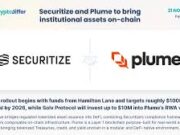As of June 13, 2025, the cryptocurrency market continues to capture global attention, with Bitcoin (BTC) and several other popular tokens experiencing significant price surges compared to a year ago. Bitcoin, for instance, has solidified its position above $100,000, driven by macroeconomic factors, institutional adoption, and favorable regulatory developments. But what about Ethereum (ETH), the second-largest cryptocurrency by market capitalization? While Ethereum has not matched Bitcoin’s meteoric rise, it remains a cornerstone of the crypto ecosystem, powering decentralized finance (DeFi), non-fungible tokens (NFTs), and Web3 applications. This blog post explores Ethereum’s current state, price trends, recent developments, technical analysis, and long-term outlook, offering an exhaustive look at what’s driving ETH in 2025.
Ethereum’s Price in 2025: Where Are We Now?
As of June 13, 2025, Ethereum’s price is fluctuating between $2,450 and $3,914, depending on the source, with a market capitalization ranging from $298.23 billion to $471.88 billion. Recent data indicates Ethereum is trading at approximately $2,733.87, reflecting a 1.06% daily price drop but showing signs of bullish momentum in the short term. This price is significantly lower than its all-time high of $4,878 in November 2021, suggesting that Ethereum is still recovering from the 2022 “crypto winter” and facing unique challenges in 2025.
Compared to a year ago, when Ethereum hovered around $1,580, the current price represents a 70% increase, signaling a recovery but not the explosive growth seen in Bitcoin or other altcoins like Solana (SOL). Posts on X reflect mixed sentiment, with some users noting Ethereum’s underperformance compared to Bitcoin, citing factors like its shift to Proof of Stake (PoS) and competition from faster blockchains. However, others highlight growing network activity, such as 50 million active addresses and $264 billion in trading volume on decentralized exchanges (DEXs) in May 2025, as signs of Ethereum’s resilience.
Factors Driving Ethereum’s Price in 2025
Ethereum’s price is influenced by a combination of macroeconomic trends, technological developments, institutional adoption, and market sentiment. Below, we break down the key drivers shaping Ethereum’s performance in 2025.
1. Technological Upgrades: The Pectra Upgrade and Beyond
Ethereum’s ongoing evolution is a major factor in its price dynamics. The Pectra upgrade, activated on May 7, 2025, is one of the most significant updates since the Ethereum Merge in 2022, which transitioned the network from Proof of Work (PoW) to Proof of Stake (PoS). The Pectra upgrade introduces several Ethereum Improvement Proposals (EIPs), including:
- EIP-7702: Enhances wallet capabilities by introducing account abstraction, simplifying user interactions with smart contracts.
- EIP-7251: Expands staking limits, allowing more validators to participate and increasing network security.
- EIP-7691: Improves transaction efficiency on Layer 2 networks, reducing costs and boosting scalability.
These upgrades aim to make Ethereum more user-friendly, scalable, and competitive against rivals like Solana and Binance Smart Chain. The Pectra upgrade has already fueled a 35% price rally in the past week, pushing ETH to $2,450 from lows of $1,800. Upcoming upgrades like Verkle trees and EIP-7002, potentially launching by the end of 2025, promise further improvements in scalability and efficiency. Additionally, Ethereum’s long-term roadmap includes the Surge, Verge, Purge, and Splurge phases, targeting 100,000 transactions per second (TPS) to cement its position as a leading blockchain.
However, some analysts caution that the benefits of these upgrades may not immediately translate to price gains. The complexity of Ethereum’s modular approach, with a focus on Layer 2 solutions, has led to debates about whether it sacrifices short-term revenue for long-term scalability.
2. Institutional Adoption and Ethereum ETFs
The approval of spot Ethereum ETFs by the U.S. Securities and Exchange Commission (SEC) in July 2024 was a landmark event, bringing institutional capital into the Ethereum ecosystem. Unlike Bitcoin ETFs, which saw massive inflows, Ethereum ETFs have experienced slower adoption, partly due to restrictions on staking. Posts on X suggest that the SEC’s decision to disallow staking in ETH ETFs has dampened enthusiasm, as staking is a key feature of Ethereum’s PoS model.
Despite this, ETF inflows are gaining traction, with $281 million in spot ETF accumulation reported recently. Major financial institutions like BlackRock, Franklin Templeton, and JPMorgan are increasingly using Ethereum-compatible chains for tokenizing real-world assets (RWAs), such as bonds and real estate, which could stabilize ETH’s value over time. Analysts predict that if staking is approved for ETH ETFs by 2026, it could trigger a significant price rally, potentially pushing ETH to $5,000 or higher.
3. DeFi, NFTs, and Layer 2 Solutions
Ethereum remains the backbone of DeFi, hosting over 50% of the total value locked (TVL) in DeFi protocols, currently at $61.208 billion. The network also dominates the NFT market, with most major NFT collections minted on Ethereum. Layer 2 solutions like Arbitrum and Optimism have addressed Ethereum’s high gas fees, making it more accessible for developers and users. These solutions bundle transactions off-chain and settle them on Ethereum’s mainnet, reducing costs while maintaining security.
However, Ethereum faces stiff competition from faster and cheaper blockchains like Solana, Avalanche, and Sui. Posts on X highlight concerns that Ethereum’s Layer 1 execution layer and blobspace scalability lag behind competitors, potentially impacting its market share. Despite this, Ethereum’s robust developer community—boasting 112,535 repositories and 2,913 active developers—ensures its continued dominance in smart contract development.
4. Macroeconomic and Regulatory Factors
Ethereum’s price is sensitive to macroeconomic conditions, such as U.S. Federal Reserve interest rate policies and inflation trends. Historically, a 1% drop in U.S. 10-year Treasury yields has coincided with a 35% ETH rally over 60 days, while a 1% rise has shaved 28% off prices. In April 2025, yields fluctuated between 3.9% and 4.6%, contributing to ETH’s volatility.
Regulatory developments also play a role. The election of Donald Trump as U.S. President in 2024 has injected optimism into the crypto market, with his administration signaling a crypto-friendly stance. This has boosted risk assets like Ethereum, but regulatory uncertainties, such as potential securities classification for staking, remain a risk. Clearer regulations in Europe and growing institutional adoption could mitigate these concerns, supporting ETH’s price in 2025.
5. Market Sentiment and On-Chain Metrics
Market sentiment for Ethereum is cautiously bullish, with the Fear & Greed Index at 71, indicating greed. On-chain metrics show robust network activity: 50 million active addresses, 1.4 million daily transactions, and 158,000 ETH added to the staking queue in May 2025. However, a net increase of 60,000 ETH monthly since April 2024 suggests inflation is outpacing ETH burned via EIP-1559, potentially pressuring prices.
The Market Value to Realized Value (MVRV) ratio of 2.12 on May 15, 2025, indicates slight overvaluation, while the Relative Strength Index (RSI) at 65.45 suggests rising buying strength but nearing overbought territory. These metrics point to short-term bullish momentum but highlight the need for sustained buying to break key resistance levels like $3,000.
Technical Analysis: Ethereum’s Price Trends in 2025
Technical analysis provides insights into Ethereum’s short-term and long-term price movements. Here’s a breakdown of key indicators as of June 13, 2025:
- Price Levels: Ethereum is trading at $2,733.87, with support at $2,400 and resistance at $3,000. A breakout above $3,000 could signal a new bull cycle, while a drop below $2,145 (50% Fibonacci retracement) would be bearish.
- Moving Averages: The 50-day moving average is rising, indicating a strong short-term trend, while the 200-day moving average is sloping up on the weekly chart, suggesting long-term bullishness. However, the 200-day moving average on the daily chart is declining, indicating a weaker intermediate trend.
- Chart Patterns: A cup and handle pattern on the weekly chart suggests a potential bullish breakout in 2025, with targets at $2,888 and $4,444. A falling wedge pattern also supports a bullish outlook if ETH breaks above $3,000.
- Indicators:
- RSI: At 65.45, Ethereum is approaching overbought territory but remains bullish.
- MACD: A bullish crossover on the daily chart signals strengthening momentum.
- Bollinger Bands: Expanding volatility suggests a potential breakout above $3,300 in the coming months.
- Short-Term Forecast: Over the next 24 hours, ETH may retrace to $2,060 before resuming upward movement. For June 2025, analysts predict a range of $2,500–$2,800, with a potential push to $3,200–$3,300 by September.
Ethereum Price Predictions for 2025 and Beyond
Analysts and platforms offer a wide range of price predictions for Ethereum, reflecting both optimism and caution. Below is a synthesis of forecasts for 2025 and beyond:
2025 Price Predictions
- Conservative Estimates: Some analysts predict ETH will trade between $2,061 and $3,300, with an average of $4,054. Regulatory uncertainties and competition from faster blockchains could limit gains.
- Moderate Estimates: A consensus of experts, including Finder.com, projects ETH at $5,458–$6,105 by year-end, driven by ETF inflows, DeFi growth, and the Pectra upgrade. CoinPedia forecasts a high of $5,925, while Bitpanda sees a potential $6,700.
- Bullish Estimates: Optimistic forecasts, such as those from Forbes India and Markets.com, suggest ETH could reach $10,000–$15,000 by mid-2025, fueled by institutional adoption, a crypto-friendly SEC, and a bullish market cycle. Vikram Subburaj of Giottus predicts ETH could “add a digit” and hit $15,000 if Bitcoin continues its rally.
- Bearish Scenarios: CoinPedia warns of a retreat to $2,917 if regulatory setbacks or developer delays occur. Some bank research desks place a fair-value floor at $1,500, close to current levels.
Long-Term Outlook (2030 and Beyond)
- 2030: Predictions range from $6,319 to $38,085, with an average of $10,000–$17,658. Ethereum’s dominance in DeFi, NFTs, and Web3, combined with scalability improvements like sharding, could drive significant growth. However, competition from Solana, Avalanche, and others poses risks.
- 2040–2050: Forecasts become speculative, with estimates ranging from $23,000 to $40,000 by 2040. By 2050, Ethereum’s role in global finance and Web3 ecosystems could solidify, but technological and regulatory uncertainties make precise predictions challenging.
Challenges and Risks for Ethereum in 2025
Despite its strengths, Ethereum faces several challenges that could impact its price and adoption:
- Competition: Solana, Binance Smart Chain, Avalanche, and Sui offer faster and cheaper transactions, challenging Ethereum’s dominance. Solana’s Firedancer upgrade, targeting 100,000 TPS in late 2025, could intensify this competition.
- Regulatory Uncertainty: Potential U.S. regulations labeling staking as a security or restricting DeFi activities could dampen investor confidence. Stricter rules in markets like China could also reduce demand.
- Network Congestion and Fees: While Layer 2 solutions have reduced gas fees, Ethereum’s Layer 1 still struggles with high costs during peak usage, driving some developers to competitors.
- Inflationary Pressure: Since April 2024, ETH’s supply has increased by 60,000 monthly, outpacing burns via EIP-1559. This could exert downward pressure on prices unless demand rises.
- Market Sentiment: Posts on X suggest skepticism about Ethereum’s ability to compete with Bitcoin as a store of value or with altcoins for scalability. The lack of a strong centralized marketing push also hinders Ethereum’s visibility compared to “flashier” blockchains.
Why Ethereum Remains a Strong Investment
Despite these challenges, Ethereum’s fundamentals make it a compelling long-term investment:
- Dominance in DeFi and NFTs: Ethereum hosts over half of DeFi’s TVL and the majority of NFT transactions, ensuring sustained demand for ETH.
- Developer Ecosystem: With 43,475 weekly commits and 1,540 sub-ecosystems, Ethereum’s developer activity dwarfs competitors, fostering continuous innovation.
- Institutional Backing: Growing interest from firms like BlackRock and State Street, combined with ETF inflows, signals increasing mainstream adoption.
- Deflationary Potential: EIP-1559’s burn mechanism reduces ETH supply during high network activity, creating long-term bullish pressure.
- Privacy and Web3 Focus: Ethereum co-founder Vitalik Buterin’s emphasis on privacy solutions for money, identity, voting, and messaging positions Ethereum as a leader in Web3 innovation.
Conclusion: Ethereum’s Path Forward in 2025
Ethereum in 2025 is a story of resilience and evolution. While it has underperformed Bitcoin and some altcoins in terms of price growth, its technological upgrades, institutional adoption, and dominance in DeFi and NFTs make it a cornerstone of the crypto ecosystem. The Pectra upgrade and upcoming scalability improvements position Ethereum to compete with faster blockchains, but challenges like regulatory uncertainty and competition require careful monitoring.
For investors, Ethereum offers a balance of short-term volatility and long-term potential. Price predictions for 2025 range from a conservative $2,500 to an optimistic $15,000, with most analysts leaning toward $5,000–$7,000 by year-end. Long-term forecasts are even more bullish, with ETH potentially reaching $20,000–$38,000 by 2030. However, the crypto market’s inherent volatility demands caution—invest only what you can afford to lose and stay informed about market trends and regulatory developments.
As Ethereum continues to build the infrastructure for a decentralized digital economy, its role in shaping the future of finance, Web3, and blockchain technology remains undeniable. Whether you’re a trader eyeing short-term gains or a long-term investor betting on Ethereum’s ecosystem, 2025 promises to be a pivotal year for ETH. Keep an eye on on-chain metrics, ETF inflows, and network upgrades to navigate this dynamic landscape.
Disclaimer: The information in this blog post is for informational purposes only and does not constitute financial or investment advice. Cryptocurrency investments are highly volatile and carry significant risks. Always conduct your own research before making investment decisions.
Sources:
- CoinPedia, InvestingHaven, Changelly, Statista, Bitpanda, CryptoNews, CoinDCX, Benzinga, Coinbase, Forbes, Finder, Binance, Forbes, Cryptopolitan, Iconomi, CCN, 99Bitcoins, Capital.com, Capex.com, Cryptomus, Yahoo Finance, CryptoNewsZ, ZebPay, Markets.com, PrimeXBTweb:0-24
- Posts on Xpost:0-7




























SEC’s murky stance on staking or competition from Solana is keeping ETH under. But ETFs are really doing their magic